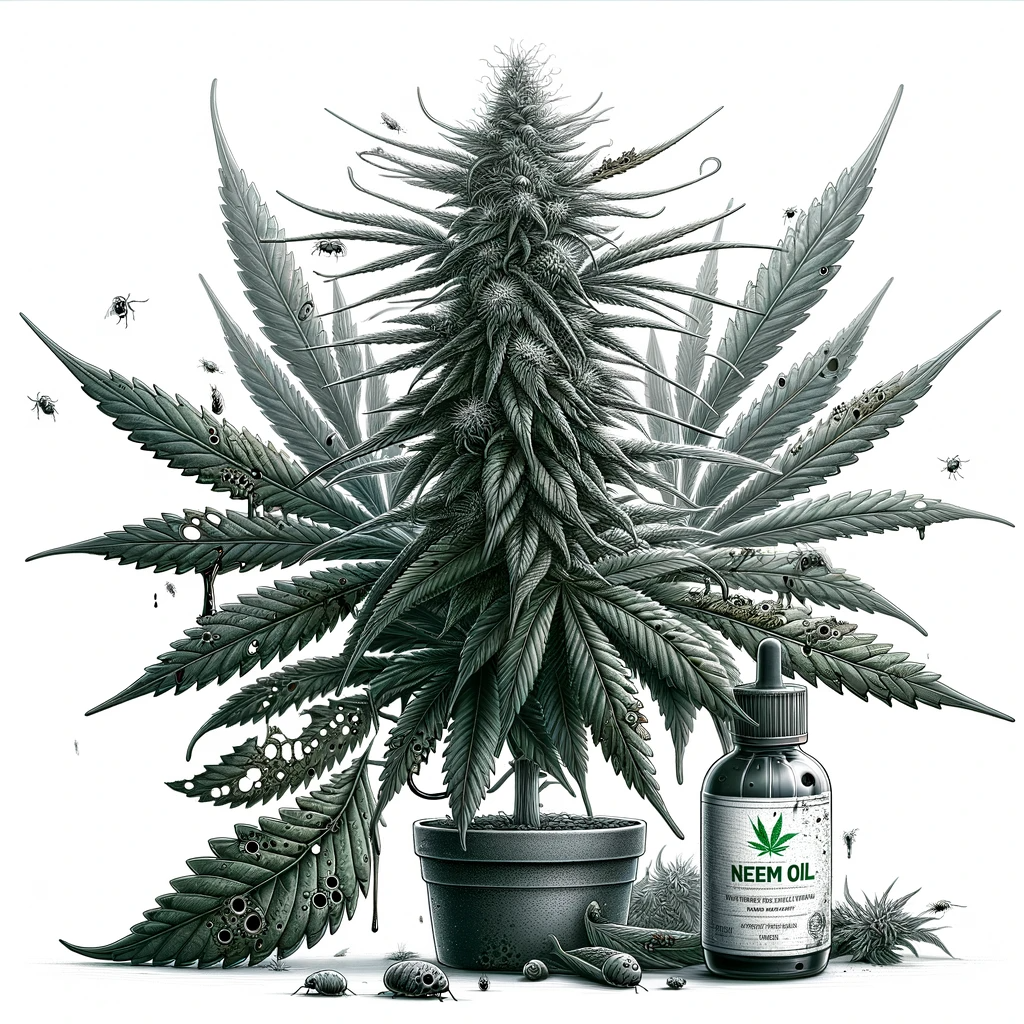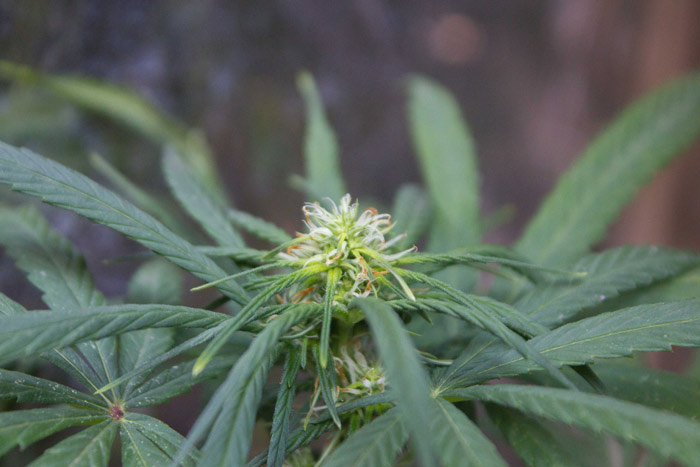Key Takeaways:
- Neem oil’s effectiveness in controlling common cannabis plant pests.
- The natural composition of neem oil and its safety profile.
- How to apply neem oil on cannabis plants for maximum efficacy.
- Comparison with other pest control methods.
- Tips for integrating neem oil into regular cannabis plant care.

The Neem tree has naturally developed throughout its evolution a series of mechanisms that allows it to defend itself against attacks by phytophagous insects, fungi, viruses and bacteria, while respecting a large part of the useful fauna such as natural predators and pollinators.
It is native to India and from here it spread to other tropical areas (Caribbean, Mauritania, etc …), where it develops in the wild, reaching sizes of several dozen meters at times. The active principles with phytosanitary interest are found in the fruit; This is slightly smaller than an olive and is cream in color. An oil is obtained from it by the cold pressing process, although with the laboratory processes that have been developed in recent decades it has been possible to obtain a series of extracts that allows a large part of the inert substances present in the oil and thus have a higher percentage of active ingredients.


The take it is very effective against aphids (Aphis sp.), whitefly (mostly Bemicia tabaci and Trialedoures vaporariorum), mites (especially red spider mites), Nematodes, Lyriomozas (genus of insects to which defoliating moths belong, such as Lyriomiza trifoli), the citrus submarine (Phylonictis citri), fruit fly (Ceratitis capitata), olive fly (Dacus olive), Pear Psylla, Tuber moths (such as Phthorimaea operculella, Tecia solanivora, …) and many others somewhat less common.
Neem in none of its formulations (oil, extract or oleoextract) presents toxicity on warm-blooded animals, so it is totally harmless to man; In studies carried out on animals, certain toxicity was observed at doses higher than 5000 mg / kilo of individual, so that for an individual weighing 80 kilos, some gastric problems would begin to be appreciated with intakes over 400 grams of these formulations in one go .
When choosing which of the three presentations we are most interested in, we must first take into account a series of considerations:
- All active materials and especially the Azadirachtina It is very photodegradable (it disappears easily with the incidence of solar rays) so it should be applied in the late afternoon.
- On the other hand, with high temperatures, the product acts better, so heat can be a good ally when applying the product.
- The concentration of active ingredients is higher in the extract, while in the oleoextract it can decrease up to half with respect to the first; in the oil the presence can be of a tenth part comparing it with the extract.
- Vegetable oils are very valuable for the fight against insects because they act as adherents increasing the persistence of other products that are applied by combining them with them; and even in correct doses it avoids the breathing of the insects causing them the suffocation.
After this we can consider that the three presentations are interesting but each one has its moment and modes of application.
Comparing Neem Oil with Other Pest Control Methods
When it comes to pest control in cannabis cultivation, growers often face a choice between natural and synthetic solutions. Neem oil stands out as a natural alternative, but how does it compare to chemical pesticides?
Efficacy: Chemical pesticides may offer quicker results in pest eradication compared to neem oil. However, pests can develop resistance to these chemicals over time, diminishing their effectiveness. Neem oil, with its multi-faceted approach to pest control, remains effective over longer periods as pests are less likely to develop resistance to its natural compounds.
Safety: Chemical pesticides often leave harmful residues that can affect the plant, the environment, and potentially the consumer. Neem oil, on the other hand, is biodegradable and non-toxic to humans and pets when used as directed. It’s a safer choice for growers concerned about the health implications of their pest control methods.
Environmental Impact: Synthetic pesticides can be harmful to beneficial insects, soil quality, and surrounding wildlife. Neem oil is less harmful to beneficial insects, especially when applied correctly, making it a more environmentally friendly option.
Integrating Neem Oil into Your Cannabis Plant Care Routine
Incorporating neem oil into your cannabis plant care regimen can be a game-changer in maintaining healthy plants. Here are some tips for doing so effectively:
- Preventive Applications: Regularly applying neem oil can prevent pest infestations before they start. A monthly application during the growing season can keep your plants protected.
- Complementary Practices: Combine neem oil applications with good cultivation practices. This includes maintaining proper spacing between plants, ensuring adequate ventilation, and monitoring plants regularly for early signs of pest infestation.
- Use in Soil Drench: Neem oil can also be used as a soil drench. This method helps in controlling soil-borne larvae and pathogens, offering an added layer of protection for the roots.
- Combining with Other Natural Methods: Neem oil can be part of a broader integrated pest management (IPM) strategy. Combine it with other natural methods like introducing beneficial insects or using companion planting to enhance overall pest control. see: “Garden Pests: Thrips Control.”
Conclusion
Neem oil emerges as a potent, safe, and environmentally friendly solution for pest control in cannabis cultivation. Its ability to effectively manage a range of pests, coupled with its safety profile, makes it an excellent choice for growers seeking sustainable cultivation practices. By integrating neem oil into your plant care routine, you can ensure that your cannabis plants remain healthy and thriving, free from the detrimental effects of pests.
Embrace the power of nature with neem oil and witness the transformation in your cannabis garden. Safe, effective, and time-tested – neem oil is indeed nature’s secret weapon against pests.




